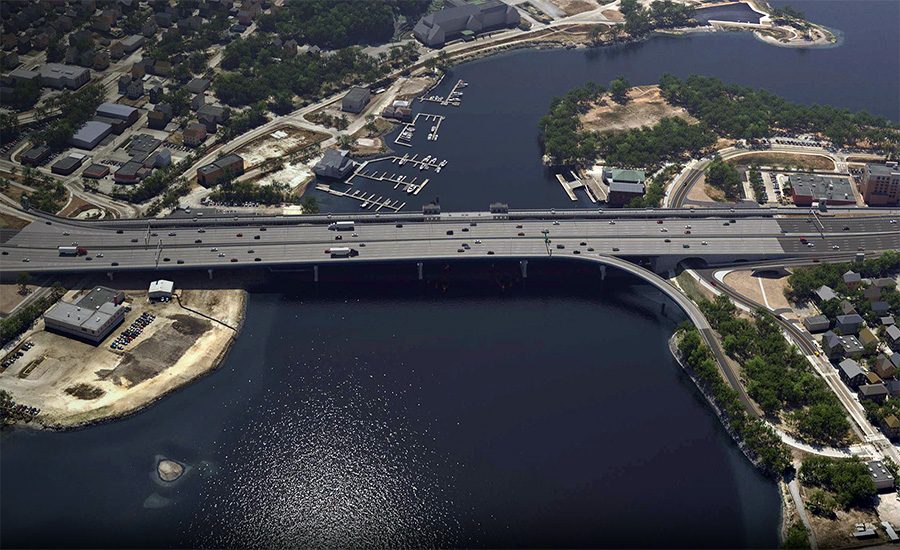Poor Disclosure Deepens States’ $1T Deferred-Maintenance Problem

As federal infrastructure aid slows and grant recissions loom, a new Volcker Alliance report warns that many state governments are failing to disclose billions of dollars in deferred-maintenance liabilities—an omission that obscures the true scope of infrastructure decay and hampers long-term planning.
The Alliance’s three-part series, “Meeting the Trillion-Dollar Challenge,” released Oct. 16, estimates the nation’s backlog of needed repairs at roughly $1 trillion, or about 4% of U.S. GDP.
Developed with the University of Minnesota’s Humphrey School of Public Affairs and supported by the Pew Charitable Trusts, the project examines how states identify, value and report maintenance needs.
“There is no single approach to assessing or disclosing deferred maintenance across states,” said Camila Fonseca Sarmiento, director of fiscal research at the Humphrey School and lead author of the report. “Without standardized disclosure, policymakers and engineers are essentially flying blind.”
Only 30 states now reference deferred-maintenance liabilities in their capital budgets—up from 23 in 2019—leaving about 20 with no public accounting of the problem, according to the Alliance.
ENR’s own review of state budget documents mirroring the Alliance’s findings when it comes to locating credible, up-to-date and verifiable figures.
State Practices Expose Deep Gaps
The Case Studies volume highlights sharp contrasts in disclosure and asset-management practices.
In California, the Department of General Services estimates about $8 billion in deferred maintenance across more than 12,000 state-owned facilities and reports those figures annually to lawmakers. The state also mandates five-year capital outlay plans detailing project status and condition scores.
Oklahoma, by contrast, lists no statewide total. Each agency maintains its own asset data, and deferred-maintenance figures are not consolidated in capital-budget documents.
In Massachusetts, meanwhile, the Division of Capital Asset Management and Maintenance has developed a comprehensive inventory but faces a backlog exceeding $3.2 billion, mostly in higher education and public safety facilities.
These variations underscore what Noah Winn-Ritzenberg, senior director of public finance at the Volcker Alliance, called “a patchwork of definitions and accounting practices that make it nearly impossible to compare progress across states or allocate resources efficiently.”
Buildings to Bridges, Data Gaps Widen
The disclosure problem extends well beyond public facilities. A July 2025 Pew Charitable Trusts analysis estimated that state and local governments face about $105 billion in deferred maintenance on roads and bridges alone.
Pew found that while nominal spending has increased since 1999, inflation and asset depreciation have eroded real investment. More than 30 states forecast funding shortfalls totaling $86.3 billion through 2035.
“Even when agencies have maintenance targets, inconsistent data and weak reporting make it difficult to connect funding decisions with outcomes,” Pew analysts wrote.
At the federal level, the U.S. Government Accountability Office reported that the deferred-maintenance and repair backlog for civilian agencies and the U.S. Dept. of Defense more than doubled—rising from $171 billion in fiscal year 2017 to $370 billion in 2024—prompting the agency to add “Building Condition” to its 2025 High-Risk List.
The transparency gap is not the sole purview of the states.
Accurate Data Matters
When a bridge fails, quick fixes are rare. Failures that could have been prevented through routine maintenance often compound into costlier crises. The absence of consistent baseline data also hinders agencies’ ability to move from reactive repairs to strategic, proactive asset management.
“When you don’t know the condition of your assets, you can’t prioritize investments,” said Natalie Wood, policy analyst at the National Conference of State Legislatures.
The consequences are tangible: one asset-management study found that without regular upkeep, average bridge-condition ratings fell from 4.64 to 2.67 over 30 years—signaling accelerated deterioration and higher replacement costs.
“As federal dollars ebb, states that fail to quantify their liabilities risk compounding costs later,” said William Glasgall, public-finance adviser at the Volcker Alliance. “Deferred maintenance isn’t just a number—it’s a future service failure.”
For infrastructure planners, engineers and contractors, the message is clear: reliable data and disclosure are the foundations of predictable capital planning. Without transparency reforms, the Alliance cautions, the $1-trillion backlog will continue to grow, jeopardizing essential public assets.
“We strongly encourage states to address this looming threat before it becomes a crisis,” Winn-Ritzenberg said.
The post "Poor Disclosure Deepens States’ $1T Deferred-Maintenance Problem" appeared first on Consulting-Specifying Engineer

